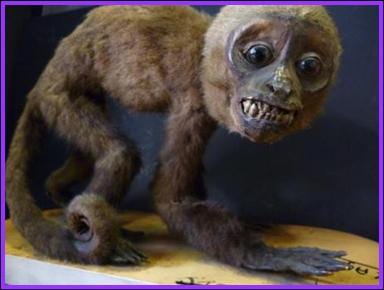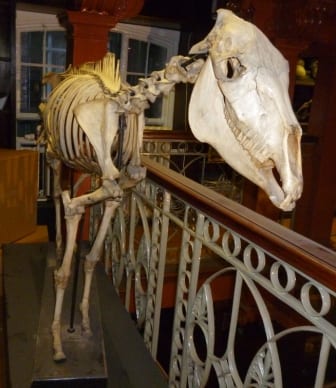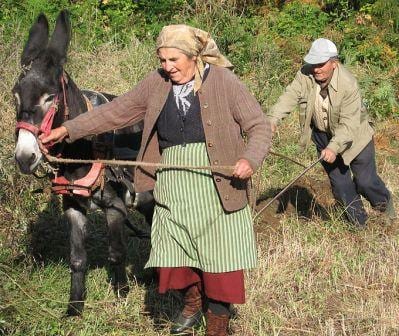Specimen of the Week: Week 120
By Emma-Louise Nicholls, on 27 January 2014
 At the Grant Museum we like any excuse to talk about animals and the Chinese New Year always provides an easy subject matter. The list of animals used in the Chinese calendar is on a 12 year rotation cycle. There are tigers, dragons and snakes… I however was born in the year of the, err, rooster. Yay. This year is an animal that has helped to win wars, boost the Olympics event programme and transport both goods and people. However, I think it’s close cousin, in the same genus, but classified as a different species, is a more interesting subject. This week’s Specimen of the Week is…
At the Grant Museum we like any excuse to talk about animals and the Chinese New Year always provides an easy subject matter. The list of animals used in the Chinese calendar is on a 12 year rotation cycle. There are tigers, dragons and snakes… I however was born in the year of the, err, rooster. Yay. This year is an animal that has helped to win wars, boost the Olympics event programme and transport both goods and people. However, I think it’s close cousin, in the same genus, but classified as a different species, is a more interesting subject. This week’s Specimen of the Week is…
**The donkey**

This donkey (Equus asinus) isn’t as
wonky as it looks. It’s an optical illusion.
Honest. (LDUCZ-Z233)
1) Our donkey is a not a zebra. Yes I know you know donkeys aren’t zebras, but in this particular case we didn’t know, until the 1970’s. We have two equine skeletons at the Museum, both of which were long thought to be zebras. In 1972 rumblings were heard on the grapevine that perhaps one of the zebras was in fact a quagga, one of the rarest skeletons in the world. Alan Gentry, a specialist examined both ‘zebra’ skeletons to measure things so minute and abstract that no-one knew they were worth measuring, and it was discovered that we did indeed have a quagga. So one of the specimens got an exciting promotion, however, the second ‘zebra’ turned out to be neither quagga, nor regular zebra, but in fact a donkey.
2) Donkeys are not to be looked down upon or sniffed at. There are many more famous donkeys than zebras. A pregnant lady in the year 0AD/0BC would never have reached a small stable with shepherds and men of apparent high intellect, without the humble donkey. Winnie the Pooh stories wouldn’t be the same without a grey manic depressive with chronic disarticulation issues. The Shrek trilogy would have been significantly less humorous and Pinocchio would have missed out on some very important life lessons had he not had a therianthropic outburst. See how important donkeys are? What have zebras ever done?
3) The domestic donkey originated in the form of the African wild ass. The wild ass looks very donkey-esque but with more gracile features akin to a wild horse, than the domesticated equine hardened by decades of human-inflicted manual labour. The wild ass’ body is grey with a white belly, whilst the legs exhibit dainty black and white stripes. The wild ass was domesticated during the predynastic period of Egypt, in around 4000 BCE. Over the last 6000 years, the toils and troubles of the domesticated wild ass meant the bloodline evolved into the hardworking donkey we know and love today.
4) The reliability and strength of the donkey is well known and well utilised. However their stubborn streak and ‘bad temperament’ makes them less than ideal in some working situations. Enter, the mule. The mule is the offspring of a male donkey and a female horse, bred with the hope of getting the father’s strength and the mother’s personality (because this is how breeding works). Mules are sterile, meaning that they cannot reproduce. But they are used around the world for tasks of manual labour.
5) From its beginnings as the wild ass, the domesticated donkey has expanded into an array of breeds. All the same species of course. On average however, a (healthy) donkey weighs in at around 480 kg and grows to about 1.6 m at the withers. The longevity of the wild ass is 40 years (measured on captive animals), whilst the donkey normally lives for slightly longer. Unfortunately though, the donkey is one of the world’s most abused creatures, possibly due to its tendency not to fight back. In many countries around the world where donkeys are used for manual labour, their average life expectancy is only 12 to 15 years.
Emma-Louise Nicholls is the Curatorial Assistant at the Grant Museum
 Close
Close



